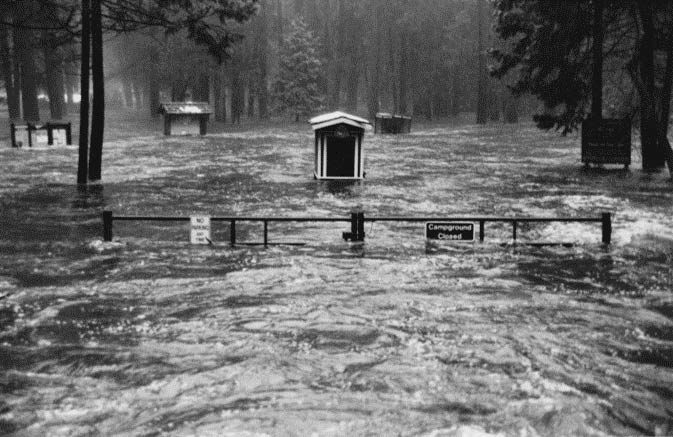January 3, 2022 - Yosemite National Park officials reported January 2 marked the 25th anniversary of the 1997 flood in Yosemite Valley, the most damaging flood in Yosemite’s recorded history.
In the first few days of 1997, an unusual storm pushed a band of warm, moist air inland from the Pacific Ocean causing widespread flooding throughout Yosemite Valley. Over the course of a week rainfall totals surpassed 20 inches, with rain falling as high as 9,200 feet elevation. When the snow line elevation rises, even a small amount, there is a drastic increase in the total drainage area that receives rain, like the storm that triggered the 1997 flood. Rapid runoff of this intense rain and melting snow caused the Merced River to swell to a record-setting crest of 14 feet above flood stage (24,600 cubic feet per second), the highest river flow measured in nearly a century
Roads and bridges in Yosemite Valley were washed out, leaving more than 2,000 visitors and employees temporarily stranded in Yosemite Valley. Half of Yosemite’s 900 campsites were flooded, as well as guest rooms and employee cabins at the Yosemite Lodge. Electrical, water, and sewer systems were destroyed. Yosemite Valley was closed to the public for over two months while the extensive infrastructure damage was repaired and replaced.
Following the flood, the National Park Service took steps to reduce the impact of future floods, including moving non-essential infrastructure out of flood-prone areas and making the essential infrastructure more resilient. Flood forecasts have improved considerably, allowing the National Park Service to be better prepared for large floods.
The 1997 flood was similar in size to the “100-year flood” in Yosemite Valley—a flood with an approximately 1% chance of occurring each year. However, as the climate warms, warm winter storms that drop rain rather than snow, like the one that caused the 1997 flood, will become more frequent, increasing the likelihood that severe floods will occur more frequently.
Although the 1997 flood negatively affected human infrastructure in Yosemite Valley, flooding is a natural process essential to the functioning of many ecosystems. Flood waters deliver organic matter and vital nutrients to the surrounding floodplain and improve wildlife habitat.
Next time you are in Yosemite Valley, look around and imagine how flood waters have changed the landscape that you see!
For dramatic footage of the event go to: https://go.nps.gov/opodju
Lower River Campground - NPS photo
Source: NPS








